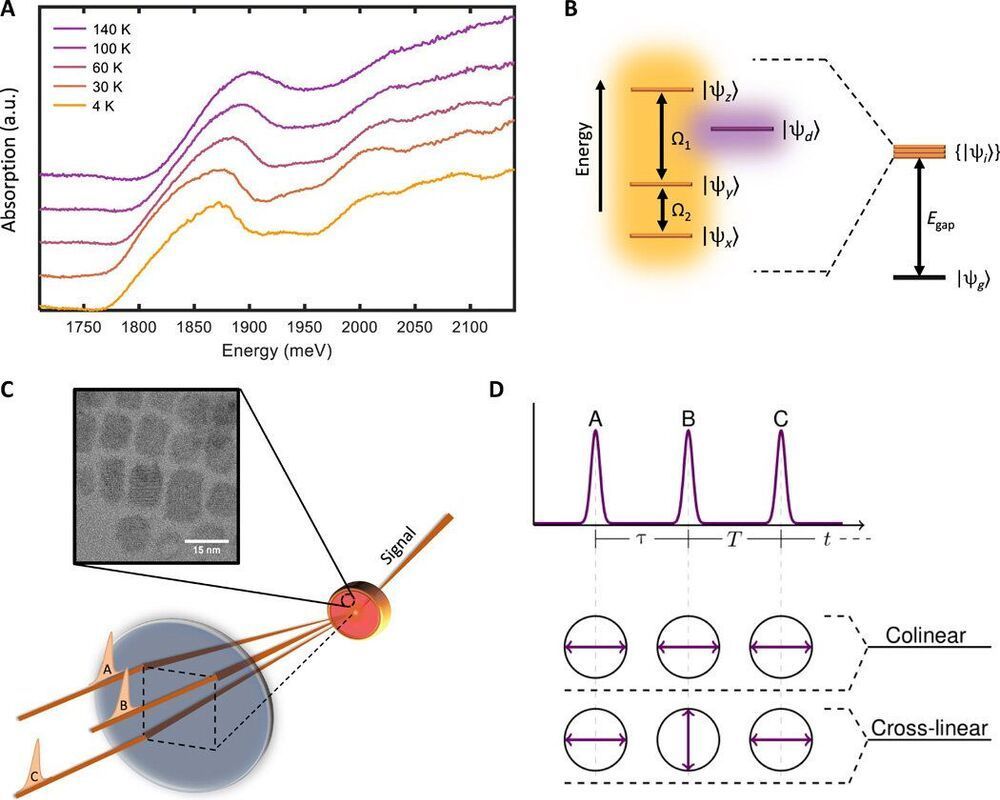Advanced optoelectronics require materials with newly engineered characteristics. Examples include a class of materials named metal-halide perovskites that have tremendous significance to form perovskite solar cells with photovoltaic efficiencies. Recent advances have also applied perovskite nanocrystals in light-emitting devices. The unusually efficient light emission of cesium lead-halide perovskite may be due to a unique excitonic fine structure made of three bright triplet states that minimally interact with a proximal dark singlet state. Excitons are electronic excitations responsible for the emissive properties of nanostructured semiconductors, where the lowest-energy excitonic state is expected to be long lived and hence poorly emitting (or ‘dark’).
In a new report now published in Science Advances, Albert Liu and a team of scientists in physics and chemistry at the University of Michigan, U.S., and Campinas State University, Brazil, used multidimensional coherent spectroscopy at cryogenic (ultra-cold) temperatures to study the fine structure without isolating the cube-shaped single nanocrystals. The work revealed coherences (wave properties relative to space and time) involving the triplet states of a cesium lead-iodide (CsPbI3) nanocrystal ensemble. Based on the measurements of triplet and inter-triplet coherences, the team obtained a unique exciton fine structure level ordering composed of a dark state, energetically positioned within the bright triplet manifold.
